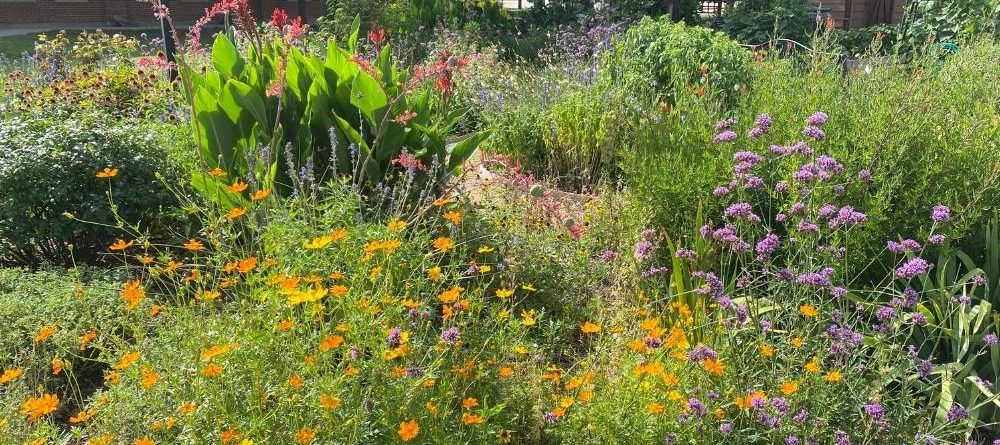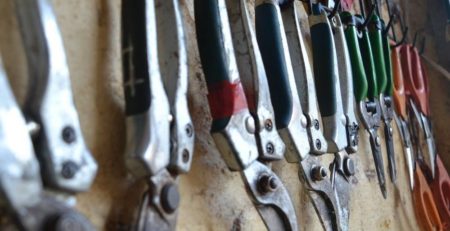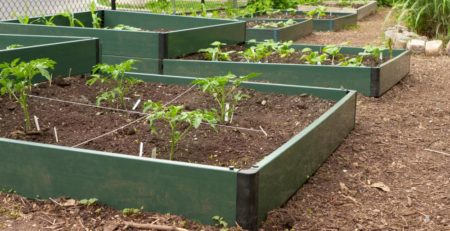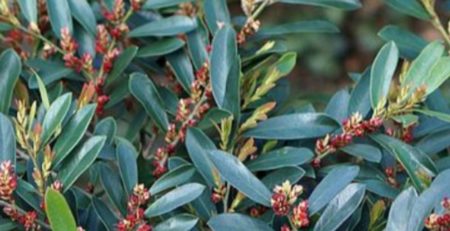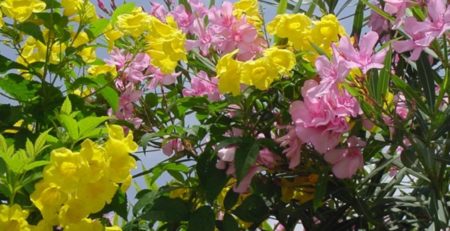Water Wise
Temperatures have climbed over 100 degrees and there is no rain in sight. This is the time of year when many gardeners resolve to create a water wise landscape “next year.” The good news is, water wise gardening is a process, and one that can begin any time.
What is water wise gardening?
The term “water wise” is one of a number of terms used to describe an approach to gardening that focuses on creating landscapes that will thrive on as little supplemental irrigation as possible. The concept of landscaping for water conservation gained attention with the advent of the Xeriscape™ movement. The term Xeriscape™ was first coined in Colorado in the 1981. Faced with a severe drought, the Denver Water Board created a task force to identify ways that citizens could decrease the amount of water they were using in their yards.
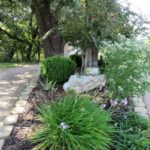
The Xeriscape™ team outlined 7 basic principles of landscape practices, which when implemented together, could lead to substantial water savings. Since then, state and local agencies across the country have designed their own programs incorporating these same basic principles. Texas SmartScape and the TAMU Earth-Kind® program are among the programs that build upon these foundational ideas.
Water wise programs are designed to make the most efficient use of water coming into the system and to prevent unnecessary losses. This can be done through the application of the seven principles.

1. Planning and design. Developing a definite plan will increase the chances of successful water savings. Identify areas of high water use or areas where water runs off. Problem areas in yard include steep slopes, low spots and west facing exposures along concrete driveways and sidewalks. An ideal water efficient landscape should be designed using the “rule of thirds.” 1/3 of the landscape should be devoted to drought tolerant turfgrass, 1/3 to native and adapted planting beds and 1/3 to pervious hardscape. This will give your landscape more visual appeal and a reduction in water use requirements. https://twri.tamu.edu/media/5434/water-efficient-landscape-updated-january-14-2020_reorg2.pdf
2. Soil analysis and improvement. Soils store water and support plant life. Healthy soils with plenty of organic matter capture and store much more water, which can sustain plants in times of drought. Practices such as composting and mulching can add organic matter to soil. Try to avoid areas of bare soil. Bare soil is subject to erosion and compaction, which can prevent water from getting into the soil. Bare patches can be mulched, planted over, or covered with pervious hardscape. Now is a great time to soil test to determine the overall health of your soil and to identify any problem areas that need to be remedied in future.
3. Practical turf areas. Turf can be part of a water wise garden. Turf reduces surface runoff by absorbing water, reduces erosion and moderates temperature. Turf-grass is considered problematic because of the potential for over-irrigation. You can make the most of grass you have by irrigating it appropriately and following recommendations for mowing and fertilizing. Small or oddly shaped areas of turf can be difficult to irrigate efficiently. Try to eliminate long and narrow areas and maintain more blocky square areas. https://conservationgardenpark.org/blog/421/the-central-open-shape
4. Appropriate plant selection. Water wise gardening focuses on the use of native and adapted plants, which generally require less supplemental irrigation than non-natives. Summer is not the best time for new plantings, but consider assessing the water needs of existing plants. Research has shown that many native species can thrive with significantly less water than people realize. If you are not sure about how much water a plant needs, you can start by applying about an inch of water per week. Then monitor the landscape at least weekly and increase the amount applied for each section as needed. https://www.austintexas.gov/sites/default/files/files/Watershed/growgreen/2016LPT/Drought-Survivability-Study-Uyen-Truong-1-29-16.pdf
5. Efficient irrigation. Research estimates that up to 50% of irrigation water is wasted through evaporation, wind, or run-off. Water is often applied to landscapes too frequently and too quickly. The goal of efficient irrigation is to give plants a sufficient amount of water without waste. This goal is accomplished by watering slowly enough for the water to penetrate the soil without running off, deeply enough to seep down to the root zone where it will not be lost to evaporation, and infrequently enough to let the soil dry between watering. For turfgrass, the soil should be wetted to a depth of about 6 inches at each watering. Perennials and small shrubs may require wetting to a depth of up to 12 inches and more, and mature trees need to be wetted to a depth of 12-18 inches. Clay soils will wet and drain differently from sandy or loamy soils. You don’t want the soil to dry out completely between watering or there may not enough reserve moisture for the plants. An easy way to check soil moisture is to walk around the landscape once or twice a week with a standard screwdriver. Push the screwdriver 4-6 inches into the soil in several places in the yard and flower beds, digging up a small amount of soil. Feel the soil for moisture; if it feels too dry, turn on the irrigation system. If it feels relatively moist, irrigation is not required. If you notice that water seems to be running off the landscape or puddling rather than soaking in, you may need to use the “cycle and soak” method of irrigating, which calls for setting sprinklers to run for shorter times at spaced intervals. This allows for water to completely seep into the soil. Ideally, plants with different watering needs, should be grouped together in “hydrozones.” By zoning plants according to water requirements, you prevent the situation of having to overwater one plant type to meet the needs of the other. The best time to water all landscape plants in early morning or late evening. https://wateruseitwisely.com/blog/cycle-and-soak-to-prevent-water-run-off/
6. Efficient use of mulches. Mulches conserve moisture by reducing evaporation and increasing water penetration during irrigation and prevents run-off from bare soils. Adding and maintaining a 3 inch layer of plant derived mulch, such as native hardwood, will significantly reduce the amount of water required in the landscape.
7. Appropriate maintenance. Make sure the system is working optimally. Prune to maintain plant health, weed, fertilize, pest control and irrigation system adjustments. This is a great time to conduct an irrigation audit of your sprinkler system.

Water conservation programs encourage the harvesting of rainwater. This can be as simple as using a rain barrel or constructing a rain garden, or as complex as installing large rainwater catchment systems.

There are many resources available that will provide motivation and inspiration for creating your own water wise landscape. Below are few links that can help you get started.
Ellefson, Connie, et al. Xeriscape™ Gardening: water conservation for the American Landscape. Macmillan, 1992.
https://aggie-horticulture.tamu.edu/extension/xeriscape/xeriscape.html
https://aggie-horticulture.tamu.edu/earthkind/
https://savedallaswater.com/how-to-save-water/water-wise-landscaping/

